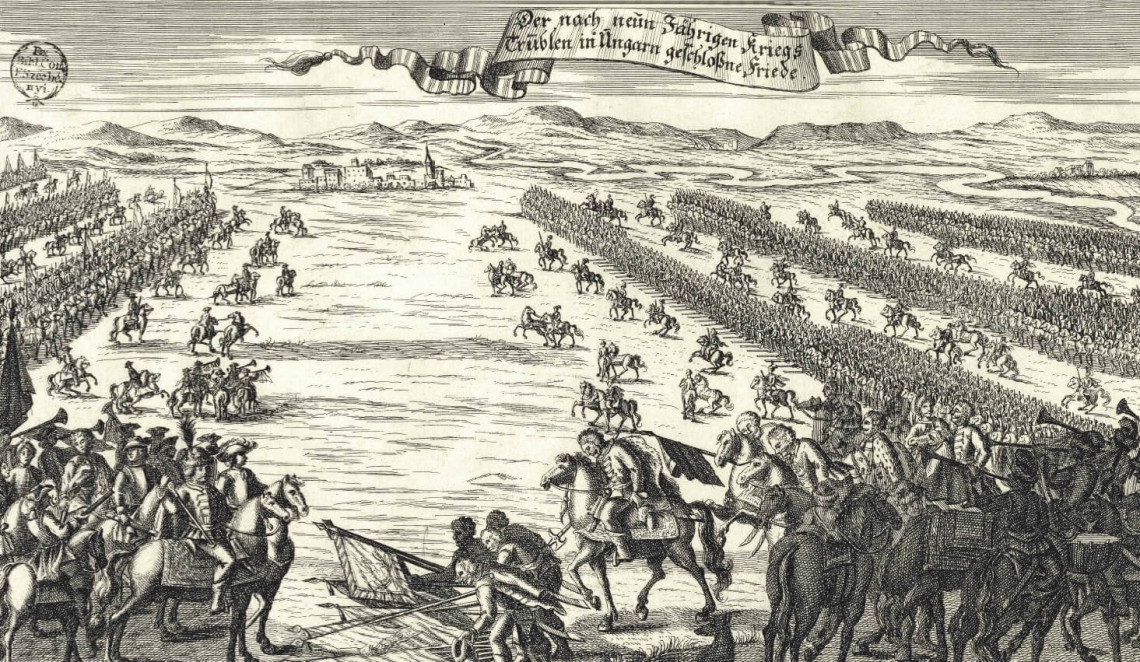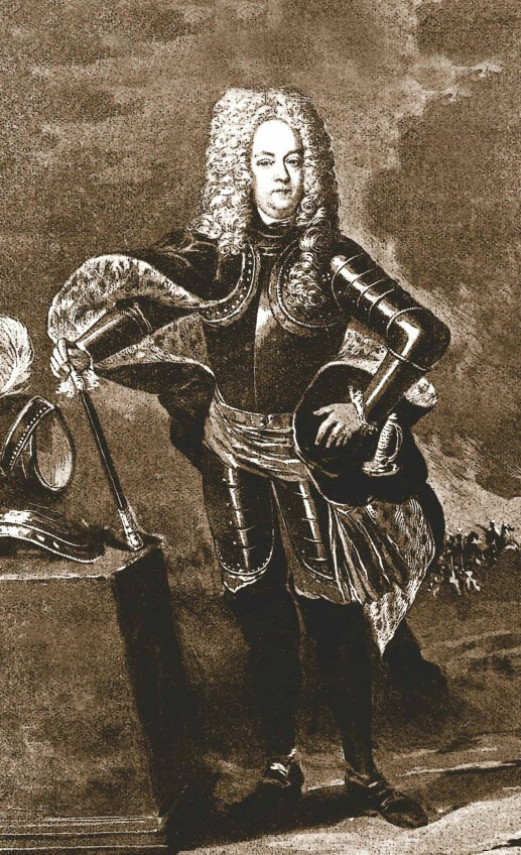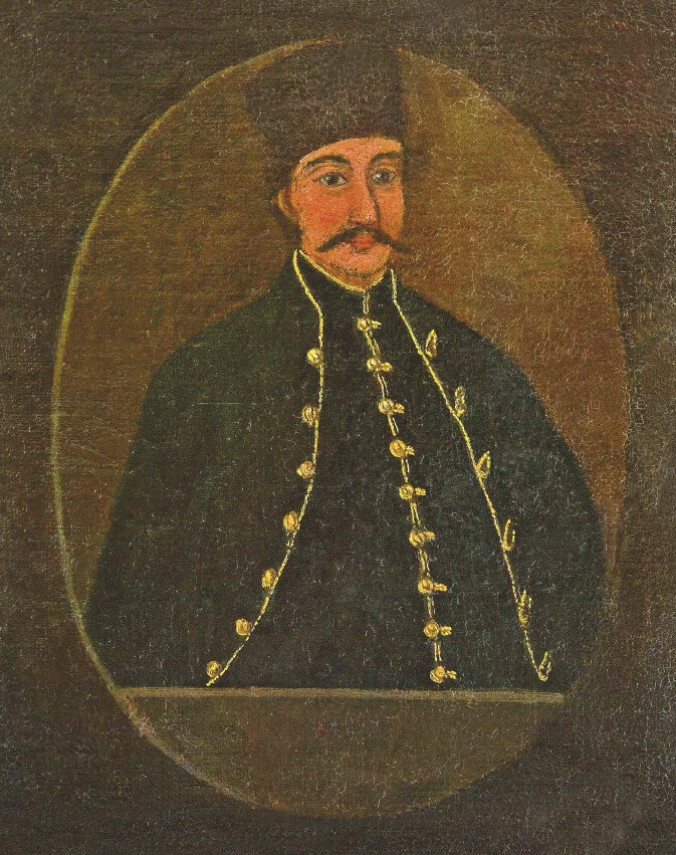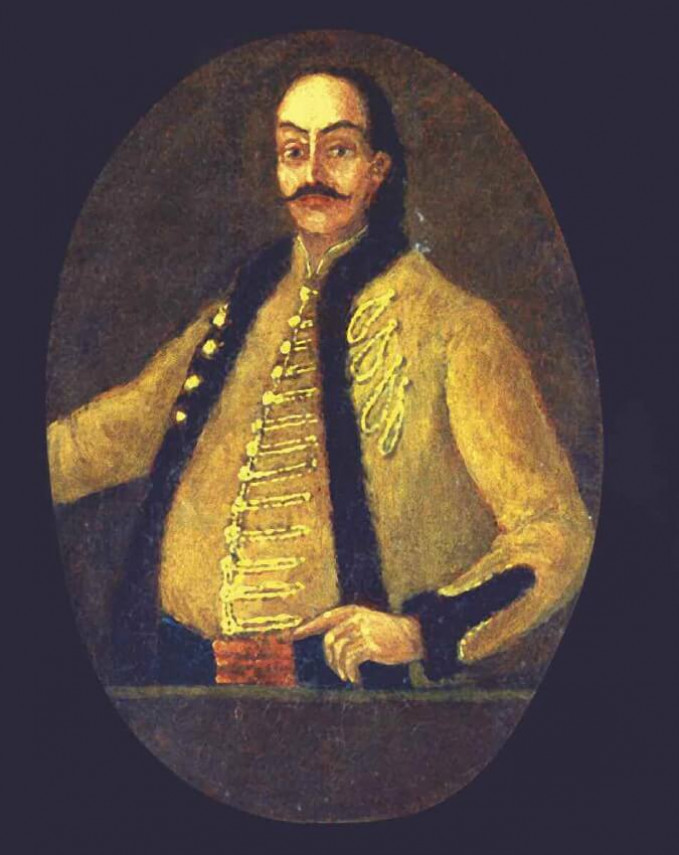In the spring and early summer of 1711, the longest independence war in Hungary’s history finally came to an end. The failure of this eight-year-long struggle, led by Prince Ferenc Rákóczi II of Transylvania, is regarded as one of Hungary’s national tragedies.
What became known as the Peace of Szatmár represented a turning point in Hungary’s early modern history. On the one hand, it brought to an end a long series of anti-Habsburg uprisings, and on the other, it marked the beginning of a new era, one ensuring Hungary’s integration in the Habsburg monarchy on favorable terms or, at any rate, more favorable than the forced conditions following the expulsion of the Turks. Thus, it initiated the process that saw the reconstruction of a country that had been completely destroyed during 150 years of Ottoman rule and the rise of what would be the modern state of Hungary.
The actual peace treaty consisted of only a few pages. The agreement, summarized in ten numbered and one unnumbered points, was essentially a political compromise concluded between the commanders-in-chief of the two warring parties – Count János Pálffy on behalf of Emperor Charles VI and Baron Sándor Károlyi on behalf of the Rákóczi-led Kuruc rebels.
The fortunes of Rákóczi’s independence struggle were already in decline after suffering defeat at the Battle of Trencsén in 1708, to be followed by further reversals during the Liptó Campaign in 1709 and the Battle of Romhány in early 1710. The prolonged state of war and civil war, coupled with a plague epidemic that had raged in recent years, had almost completely destroyed Hungary’s social and economic lifeblood; thus the desire for peace grew stronger on both sides.

A convergence of interests
Facing impending military defeat, Rákóczi could only rely on foreign military assistance to rescue the situation. His master plan involved taking the French side during the peace negotiations ending the War of the Spanish Succession.
Meanwhile, with the Swedish King Charles XIII having been defeated at Poltava in the Great Northern War against Russia, Rákóczi placed increasingly high hopes on military support on the part of Tsar Peter I, with whom he had been in a formal alliance since 1707.

Both diplomatic options entertained by Rákóczi – an alliance with France or Russia – would have seen prolonged fighting in Hungary. The Kuruc army, however, was no longer capable of fighting on its own and was only able to avoid military defeat because Vienna found it increasingly important to achieve a lasting peaceful settlement in Hungary. As the War of the Spanish Succession, which had been raging since 1701, was drawing to a close at the turn of 1710-1711, it became more and more obvious that the locus of the Habsburg Empire was shifting from western Europe to the east, to the Danube River. This geopolitical shift imbued Hungary with greater significance, and the need to end the war in the kingdom became increasingly urgent – a need that acquired even more urgency as the Ottoman threat showed signs of renewal following the Peace of Karlóca (Karlowitz) in 1699.
János Pálffy, the newly appointed commander of the imperial armies, recognized the moment as opportune for reconciling the interests of the empire and the Hungarian nobility. Pálffy was not alone in standing against the war party, as he had the support of the High Chancellor of Bohemia Johann Wratislaw, the President of the Imperial War Council Prince Eugene of Savoy, and, of course, the emperor himself. Pálffy also clearly understood that this would require, above all, the reconciliation of Hungarian political forces, that is, the anti-Habsburg Kuruc insurgents on the one hand and the pro-Habsburg German and Hungarian Labanc partisans on the other. However, he needed a suitable opposite number to carry out his plan, and he chose Károlyi for this role. In pursuit of this, he addressed a letter to Károlyi on November 14, 1710, appealing for his personal submission to the crown.
Of course, the imperial commander-in-chief could not have had serious expectations that Károlyi would immediately desert the Kuruc camp. Instead, it was more likely that he expected Károlyi to show the letter to Rákóczi and thus kickstart the previously suspended negotiations with the Kuruc leader. However, a similar idea had already occurred to Rákóczi: on November 23 that same year, he suggested that Károlyi meet Pálffy under the pretext of a mutual exchange of prisoners. It was clear that both sides were taking cautious steps to sense out the position of the other. Károlyi later claimed that he received Pálffy’s letter – thanks to “God’s miraculous, secret, and incomprehensible providence” – just as he was leaving for Munkács (Mukachevo) to discuss Rákóczi’s proposal in more detail.
Rákóczi’s unwillingness to compromise
Discussions began through the mediation of the chief justice of Debrecen, György Komáromi Csipkés, as the Kuruc found themselves in an increasingly hopeless situation on the military front. In the autumn and winter of 1710, the Hungarian towns of Szolnok, Eger, and Eperjes (Prešov) were occupied by imperial forces while communications with the besieged city of Kassa (Košice) were severed. By the end of the year, the Kuruc had been pushed back behind the Tisza River, and by January 1711, Pálffy had moved his forward headquarters to Debrecen.
When Pálffy left his new headquarters to carry on his advance, he was received near the towns of Téglás and Hadház (Hajdúhadház), first by Károlyi's aide-de-camp and then by the Kuruc commander-in-chief himself. Their meeting resulted in another truce in exchange for some territorial concessions.

Once Károlyi was convinced that Pálffy had no intention of taking advantage of his military superiority (he had 50,000 imperial troops on hand against 20,000 Kuruc), he sought out the possibility of a political agreement and managed to persuade Rákóczi to meet Pálffy in person. The meeting took place in Vaja, in northeast Hungary, on January 31, 1711. Rákóczi had become more amenable to the idea of a permanent peace treaty by this time and promised Pálffy he would write a letter of allegiance to the emperor. The tone of the letter, however, remained intransigent, and instead of expressing submission, it emphasized the rightness of the rebels’ cause. Shortly after, during a meeting of the Hungarian and Transylvanian Diet at Salánk (Shalanky), a resolution was passed to adhere to the peace terms offered in 1706 during discussions in Nagyszombat, two points of which Vienna found unacceptable: Transylvania’s demand for independence and international guarantees for peace.
Rákóczi, thence, conclusively ruled out the possibility of a compromise and left for Poland on February 21, 1711, to meet Tsar Peter I. When he crossed the frontier at Verecke (Veretskyi) Pass, he likely had little inkling that this would be his last glimpse of his homeland and that he would never see the tiny villages and vast forests of his sprawling estates at Munkács and Szentmiklós (Chynadiiovo) ever again. Before departing, he entrusted Sándor Károlyi with command of the army and continuation of negotiations. At the same time, he removed the fortress of Munkács from Károlyi's command and appointed the elderly, gout-stricken General István Sennyey – chancellor of the Hungarian court and Károlyi’s cousin – as head of the garrison.
Waning morale

Colonel Baron András Zay (1685?–1735) – member of Rákóczi’s noble bodyguard and commander of the Kuruc cavalry assigned to the Munkács garrison. Zay attended the first Szatmár assembly, which declared in favor of peace, and on April 16, 1711, he informed his superior, Court Marshal Ádám Vay, of this as follows: “I was also ordered to Szatmár, but for my part, Ugocsa non coronat! [Ugocsa refuses to crown!]. I did not cast a vote, nor did I sign.” Nevertheless, when Munkács finally surrendered, he accepted the amnesty that was offered and did not go into exile. His younger brother, Zsigmond Zay, however, ended his life as the last companion of the Transylvanian Mikes Kelemen, “the Hungarian Goethe,” in exile in Rodostó.
Károlyi, who held a realistic view of the military balance of power and the domestic and foreign policy options, exchanged several letters with Rákóczi, held consultations, and – having declared his allegiance to the emperor – convened an assembly in Szatmár, where those present decided in favor of a peace. Upon learning of the decision of the first Szatmár assembly, Rákóczi made a desperate attempt to continue the fight. In his famous Kukizów Manifesto of April 18 – written with an “angry pen,” according to Pálffy’s private secretary János Pulyai – Rákóczi addressed the same social stratum, the lesser nobles, with which he had sparked the uprising eight years before. By then, however, most of the “poor lads” had tired of the struggle, and after Károlyi had secured the privileges of officers of serf origin in the text of the treaty, even this depleted and exhausted group no longer stood in the way of an agreement.
Rákóczi attempted to depose Károlyi, but his chosen successors, Field Marshal Antal Esterházy and Court Marshal Ádám Vay, remained in Poland and made no effort to replace him. However, it was not only Rákóczi who tried to prevent the treaty. An unexpected turn of events in Vienna also threatened to scupper the agreement: on April 17, 1711, the Habsburg king and emperor, Joseph I, died. Eleonóra Magdolna, the regent queen mother, removed Pálffy’s daughter – and Joseph’s mistress – from the court, followed by Pálffy himself on April 20. At this critical juncture, Eugene of Savoy intervened and managed to secure Pálffy’s reinstatement as commander-in-chief with full authority to conclude the peace negotiations.
The benevolence of the stronger

The text of the peace agreement was finalized at a second assembly at Szatmár on April 29, 1711, and certified by the signature and seal of János Pálffy, as imperial plenipotentiary and royal commissioner, and that of Karl Locher von Lindenheim, a member of the imperial war council assigned to Pálffy. On April 29 and 30, the rebel soldiers swore allegiance to the emperor on the Majtény plain and laid down their standards on the second day. The next day, the Kuruc officially signed the peace treaty in Nagykároly, not far from Szatmár. Very few of them agreed to join the imperial army, as the vast majority chose to return to their homes, still retaining their weapons. Their return home was an orderly affair, led by their officers in groups, passes in hand.
Simultaneous with the signing of the treaty, the city of Kassa surrendered to Lieutenant General László Ebergényi and his imperial forces, followed within a few weeks by the Kuruc-held towns of Kővár (Koláre), Huszt (Khust), and Ungvár (Uzhhorod).
The garrison at Munkács held out the longest, but on June 24, 1711, General István Sennyey also accepted the Szatmár agreement, and the gates of the fortress were opened to imperial troops.

Pálffy immediately forwarded the text of the treaty (apparently an original sealed copy) to Vienna via General Ferdinand Ludwig von Graven, who arrived at court on May 6. There, some minor stylistic changes were made as well as a reduction in Rákóczi’s titles. The final text was then ratified by the regent queen mother on May 26 and subsequently made public. The new Habsburg monarch, Charles III of Spain – now Emperor Charles VI – expressed disapproval of the changes wrought by the agreement, stating in advance that the Hungarians should be treated with “greater understanding” and it should be shown that “[the Habsburgs] wish to govern them with impartial justice and love.”
In the end, it can be concluded that the “Peace of Szatmár” granted a generous amnesty for all participants of the uprising, including a pardon for Rákóczi himself and the free discharge of his property. Rákóczi, however, insisted on an independent Transylvania and international guarantees regarding the peace treaty and thus rejected the agreement. Having been disappointed about the prospect of Russian assistance, he left for France but was unable to achieve a substantive acquitting of his case during peace negotiations to end the War of the Spanish Succession in Utrecht and Rastatt. In 1717, he departed for Turkey at the invitation of Sultan Ahmed III and spent the remainder of his days in Rodostó, where he died on April 8, 1735.
Despite Rákóczi’s objections, however, the agreement achieved everything for which the Kuruc had taken up arms, even in the shadow of certain military defeat. After more than a century of struggle, a compromise was eventually reached between the ruling Habsburg house and the estates, the conflicts with the Hungarian political elite were smoothed over, and the great nation-building work of the eighteenth century could begin.
(translated by John Puckett and Andrea Thürmer)
